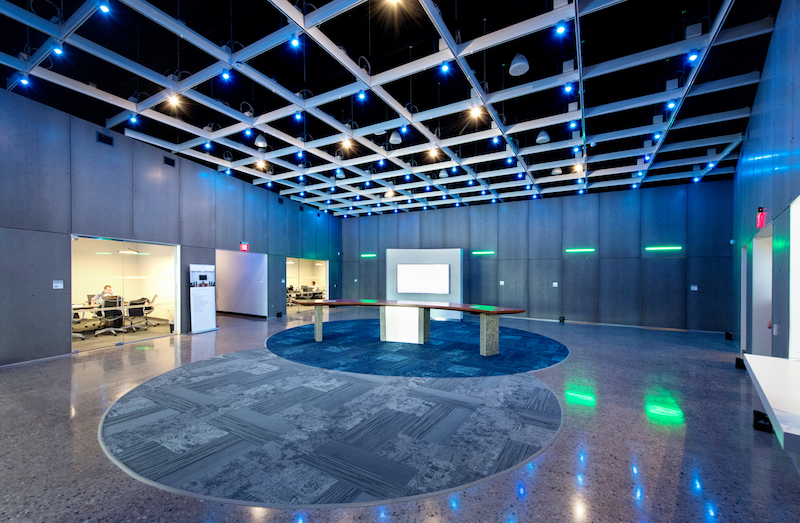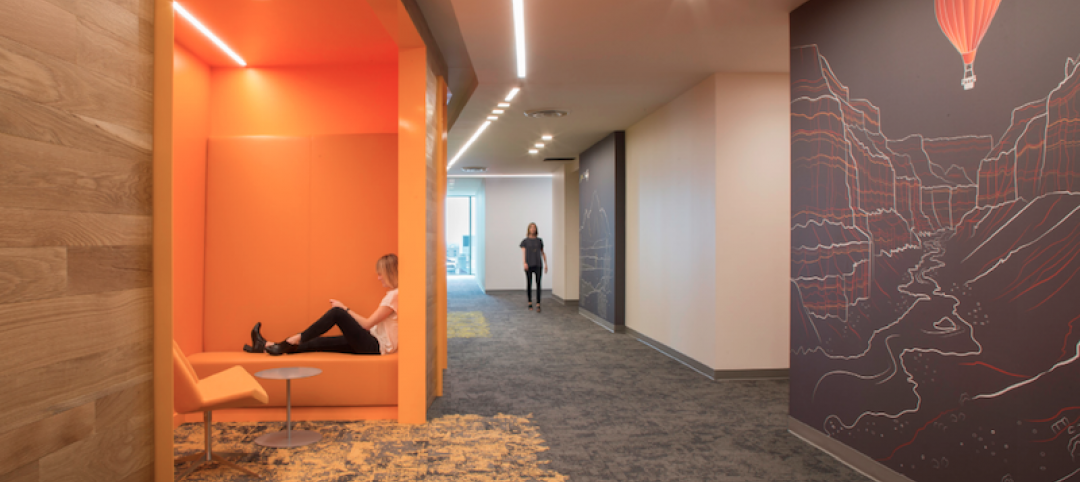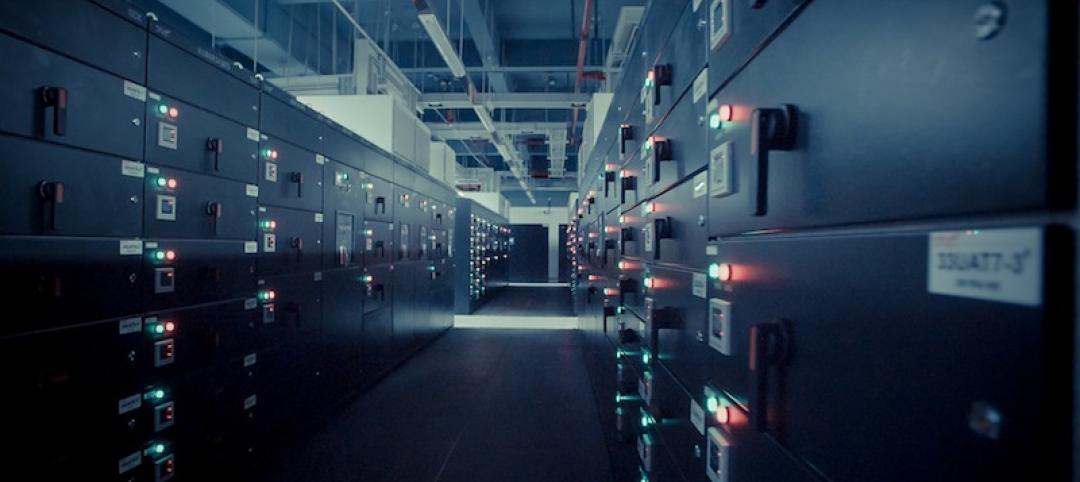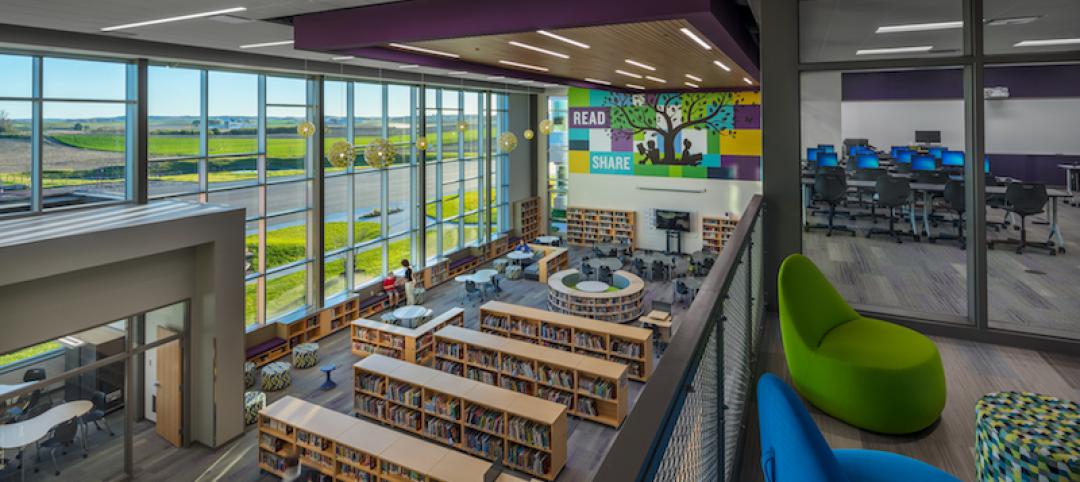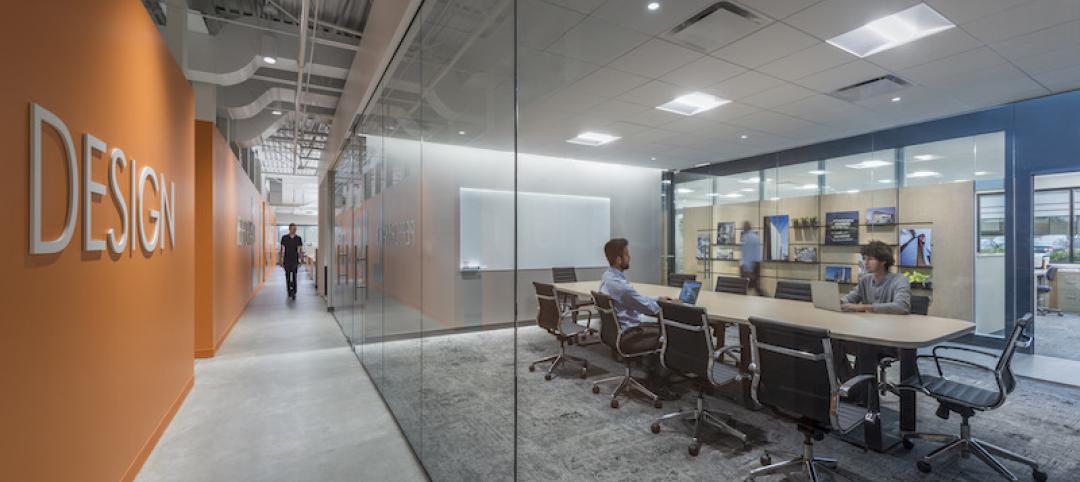The cloud is coming of age. Fortune 500 companies like Coca-Cola and General Mills that once exclusively managed their own data centers are starting to migrate to the cloud. They’ve found that outsourcing vital IT infrastructure can be a reliable, cost-effective strategy.
The data center industry is projected to double by 2021 from its capacity in 2015, according to real estate consultant JLL. An expected explosion in Internet of Things applications will lead to even more bits and bytes being collected, stored, and analyzed. Factor in what JLL calls “American consumers’ insatiable thirst for digital content,” and you have explosive demand for data storage.
One new mini-trend: Cloud providers are spreading capacity near NFL cities, says Scott Ruch, AIA, Executive Managing Principal and Critical Facilities Sector Leader with Corgan, referring to large cities with National Football League teams.
New migrants to the cloud are also building their data centers to their large metro areas in order to sleep better knowing vital infrastructure is easily accessible near corporate offices. “They want the ability to check in on those facilities,” Ruch says. But rural areas with temperate climates (for more cost-efficient cooling) and low utility rates are still in the mix.
In Europe, some countries now require sensitive data to be housed within their borders. These regulations have complicated data center location decisions, in some cases forcing companies to build out sites in several countries rather than building one consolidated facility.
Data centers are getting cheaper to build. Five to 10 years ago, the average cost was $15-20 million per megawatt, Ruch says. Today, it’s $7-15 million. Customers are spending more wisely on risk mitigation. Shells to be used in high-risk hurricane and tornado zones must still be built to withstand 170-mph winds, but outside of those zones, less costly 120-mph-resistant structures will do.
UPS system design has been upgraded such that most facilities use block-redundant designs, which provide about 20% backup power redundancy, rather than more expensive two-end systems, with 100% redundancy. The smaller backup capacity is usually adequate for the mega-facilities being built by the big providers: if one site goes down completely, they can switch to another data center, Ruch says. Most of the big cloud providers have enough system-wide capacity to weather a short, single-site shutdown.
ALSO SEE: BD+C Giants 300 data centers rankings
Top 25 data center architecture firms
Top 30 data center engineering firms
Top 35 data center construction firms
RECYCLING OLDER DATA CENTERS
Many legacy data centers are becoming obsolete. As a result, a niche market in salvaged equipment has surfaced, says Jonathan Clay, President and CEO, The Blue River Group. Chillers, raised flooring, and backup generators can be reused, he says. Some older equipment is finding its way to Asia, Africa, and Mexico. “There’s no reason to put it in a landfill,” says Clay.
Data centers are also making significant strides in energy efficiency. Most cloud providers today aim for a power usage effectiveness rating of 1.25 or less, Ruch says, well ahead of the 1.5 to 1.6 PUE range of the last decade.
Indirect/direct evaporative cooling, known as IDEC, which uses outside ambient air for cooling purposes, has been refined to the point where even air temperatures in the low 80s can be suitable. Pinpoint cooling can be directed to specific racks rather than to the entire space, says Clay. Alternating hot racks with cool racks can also reduce the overall cooling burden. Removing the chassis from servers makes cooling more effective, too.
Some data centers track and publish their PUEs—some as low as 1.1—online and in real time, according to published reports. Big players like Google, Facebook, and Intel are leading the way. Salesforce recently said it has achieved net-zero greenhouse gas emissions and is now providing a carbon-neutral cloud for all customers.
These are encouraging developments. But with demand for storage capacity rising as fast as you can say YouTube, will data center providers be able to keep up?
SEE ALL 2017 GIANTS 300 RANKINGS
Related Stories
Giants 400 | Oct 18, 2017
Top 105 office construction firms
Turner Construction Co., Structure Tone, and Holder Construction top BD+C’s ranking of the nation’s largest office sector contractors and construction management firms, as reported in the 2017 Giants 300 Report.
Giants 400 | Oct 17, 2017
Top 60 office engineering firms
AECOM, WSP, and Thornton Tomasetti top BD+C’s ranking of the nation’s largest office sector engineering and EA firms, as reported in the 2017 Giants 300 Report.
Giants 400 | Oct 17, 2017
Top 110 office architecture firms
Gensler, Jacobs, and HOK top BD+C’s ranking of the nation’s largest office sector architecture and AE firms, as reported in the 2017 Giants 300 Report.
Giants 400 | Oct 12, 2017
Top 30 data center engineering firms
Syska Hennessy Group, AECOM, and Morrison Hershfield top BD+C’s ranking of the nation’s largest data center sector engineering and EA firms, as reported in the 2017 Giants 300 Report.
Giants 400 | Oct 11, 2017
Top 25 data center architecture firms
Jacobs, Corgan, and Gensler top BD+C’s ranking of the nation’s largest data center sector architecture and AE firms, as reported in the 2017 Giants 300 Report.
Giants 400 | Oct 9, 2017
Job-ready learning: The newest K-12 schools nudge students toward careers
Some long-term K-12 trends—like beefing up safety and security, and designing for more natural light and outdoor learning space—are still in vogue.
Giants 400 | Oct 9, 2017
Top 80 K-12 construction firms
Gilbane Building Co., Balfour Beatty US, and Skanska USA top BD+C’s ranking of the nation’s largest K-12 sector contractors and construction management firms, as reported in the 2017 Giants 300 Report.
Giants 400 | Oct 6, 2017
Top 40 K-12 engineering firms
AECOM, IMEG/KJWW/TTG, and STV top BD+C’s ranking of the nation’s largest K-12 sector engineering and EA firms, as reported in the 2017 Giants 300 Report.
Giants 400 | Oct 6, 2017
Top 90 K-12 architecture firms
Stantec, DLR Group, and PBK top BD+C’s ranking of the nation’s largest K-12 sector architecture and AE firms, as reported in the 2017 Giants 300 Report.
Giants 400 | Oct 5, 2017
On wings of gold: Alternative financing schemes are propelling the high-flyin’ air terminals sector
The $4 billion renovation of New York City’s LaGuardia Airport is the first major U.S. aviation project delivered using a public-private partnership (P3) model.


